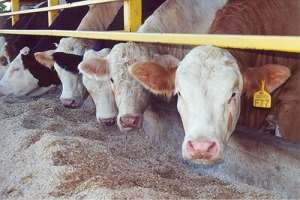By Ron Hays
The US Department of Agriculture released the most recent Cattle on Feed report, last Friday. Dr. Derrell Peel, Oklahoma State University Extension Livestock Market Economist, for his analysis of the report. Peel also summarized his analysis in his article for this week’s Cow/Calf Corner Newsletter.

“The February USDA Cattle on Feed showed that January feedlot placements were 111.3 percent of last year while marketings were 110.2 percent of one year ago. There was one extra business day this January compared to last year. The February 1 on-feed total was 10.8 million head, 100.7 percent of last year. The report was well anticipated with no surprises in any of the numbers.
“Something new beginning with this report is more detail on heavyweight feedlot placements. This and future reports will include a breakdown of over 800 pound placements into 8-900 pounds, 9-1000 pounds and over 1000 pounds for the national totals. For individually reported states, the reports will detail 8-900 pounds and over 900 pound totals. This additional weight breakdown is important and needed as heavy feedlot placements have increased significantly in recent years. Prior to 2012, the annual average percent of heavy placements each month was fairly constant at about 28 percent. Starting in 2012 the percent of heavy placements has increased steadily to the 2016 average of 36.8 percent. Not knowing how weights were distributed above 800 pounds has made it difficult to anticipate the market timing of heavy placements.
The new data shows that 8-900 pound placements made up 71.8 percent of over 800 pound placements in January compared to 74.1 percent one year ago. 9-1000 pound placements made up 20.3 percent of over 800 pound placements compared to 19 percent in January, 2016. Placements over 1000 pounds were 7.9 percent of heavy placements compared to 6.9 percent last year. In total, placements over 900 pounds represented 8.1 percent of placements in January compared to 8.4 percent last year. Over time the value of this data will grow as more history is accumulated and averages and seasonal patterns emerge.